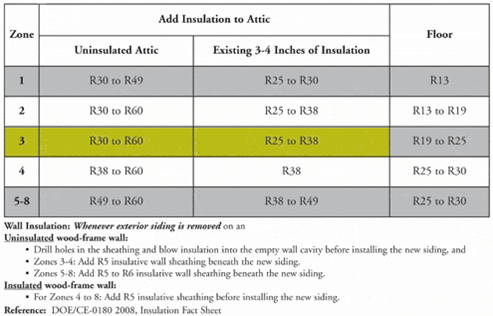Expanded polystyrene eps or beadboard serves as the best insulating rigid foam for homeowners on a budget.
Best r factor for attic insulation.
Loose fill or batt the common term for blanket insulation.
The higher the r value the better the thermal performance of the insulation.
The table below shows what levels of insulation are cost effective for different climates and.
R stands for resistance to heat flow.
The ideal attic insulation r value is different than the ideal wall insulation r.
Recommended home insulation r values.
Houses in a cold climate should have a minimum of r 49 in the attic which is equivalent to approximately 16 of fiberglass insulation.
In comparison an inch of blown fiberglass insulation has an r value of 3 1 3 4 and an inch of blown cellulose in an attic has an r value of 3 2 3 7 along with knowing the r value of a particular insulation it is also important to calculate the r value of a total system.
You ll see insulation r values indicated on product packaging and often on the product itself.
Inspecting and evaluating your insulation.
Your home s r value score will guide you toward the type of insulation you need.
Note from this chart that the ideal r value differs for each part of your home.
In general increased insulation thickness will proportionally increase the r value.
R value is a measure of insulation s ability to resist heat traveling through it.
These r values are a sum meaning this should be the total r value once you add up the entire depth of insulation.
The structural elements are usually exposed in these areas which makes it.
Once you ve decided which type is best for you examine the material options and prices to home in on the right product.
For diy attic insulation you ve got two choices.
Both can be added to uninsulated attics or layered over existing material.
However as the installed thickness increases for loose fill insulation the settled density of the product increases due to compression of the insulation under its own weight.
Insulation is identified and labeled by r value.
Installing more insulation in your home increases the r value and the resistance to heat flow.
Insulation level are specified by r value.
Thickness must not be used as the sole factor in determining the r value of loose fill insulation particularly for attic insulation.
Warmer climates only require an r 38 or higher or about 12 or more.
In particularly cold climates you might go up to.
The higher the insulation r value the greater the insulating power.
Check the attic walls and floors adjacent to an unheated space like a garage or basement.

